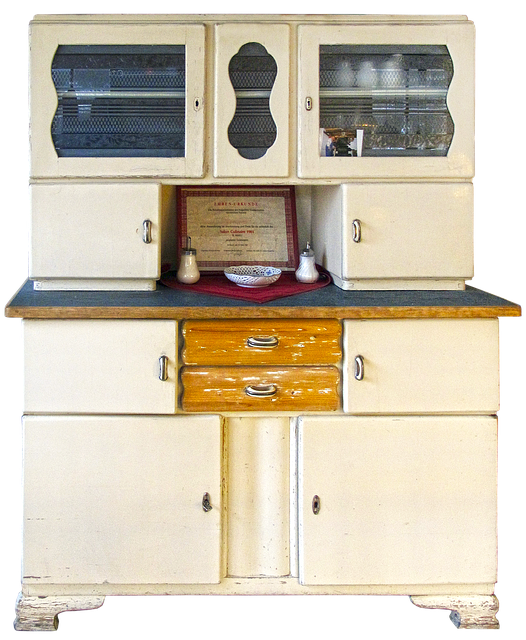Task lighting for cooking is essential in kitchen design, focusing on strategic placement of fixtures like under-cabinet lights or pendant lamps to minimize shadows, enhance color recognition, and reduce eye strain. Custom plans balance aesthetics and functionality, incorporating dimmable lighting for adjustable ambiance. By targeting critical work areas and blending task with ambient lighting, kitchens become productive, safe, and visually appealing spaces.
“Elevate your kitchen experience with customized kitchen lighting plans tailored to your culinary needs. This comprehensive guide explores the art of task lighting for cooking, offering insights into transforming your kitchen from a mundane space to a vibrant, well-lit workspace. Learn about the fundamentals of effective task lighting for cooking, discover design principles for personalized plans, and unlock essential factors for optimal illumination. Get ready to implement a game-changing lighting design that will revolutionize your kitchen.”
- Understanding Task Lighting for Cooking: The Basics
- Designing Customized Kitchen Lighting Plans
- Essential Factors to Consider for Effective Kitchen Illumination
- Implementing and Enhancing Your Kitchen Lighting Design
Understanding Task Lighting for Cooking: The Basics
Task lighting for cooking is a fundamental aspect of designing a functional and efficient kitchen. It refers to the practice of incorporating lighting fixtures specifically tailored to meet the demands of food preparation and meal preparation areas. This type of lighting ensures that tasks like chopping vegetables, reading recipes, and sautéing ingredients are done under optimal conditions, enhancing both safety and enjoyment in the kitchen.
In most kitchens, task lighting is typically focused on work surfaces, such as countertops and tables. Strategically placed fixtures, including under-cabinet lights or pendant lamps, directly above these areas, provide a clear, bright light that minimizes shadows. This direct illumination ensures accurate color recognition and reduces eye strain, making it easier for cooks to gauge ingredient quantities and ensure even cooking.
Designing Customized Kitchen Lighting Plans
Designing customized kitchen lighting plans involves a thoughtful balance between aesthetics and functionality. The goal is to create a space that not only looks stunning but also supports various tasks efficiently, especially when it comes to cooking. Incorporating task lighting for cooking areas is key; this can be achieved by strategically placing under-cabinet lights or pendent fixtures above the stove or sink. These focused lights ensure clear visibility while preparing meals, reducing strain on eyes and enhancing overall kitchen usability.
When designing these plans, consider the unique layout of your kitchen. Incorporate dimmable lighting to adjust ambiance according to task and time of day. For instance, a brighter light setting may be ideal for intense cooking tasks, while a softer glow can create a cozy atmosphere during meal preparation or when the kitchen doubles as a gathering space. Customized plans cater to these nuances, offering both flexibility and enhanced practicality in one of the home’s most-used rooms.
Essential Factors to Consider for Effective Kitchen Illumination
When designing customized kitchen lighting plans, several essential factors come into play to ensure effective illumination tailored for cooking tasks. The first crucial consideration is understanding the specific needs and workflow of the kitchen. This involves evaluating the layout, including worktrips, preparation areas, and storage spaces. Incorporating task lighting for cooking zones is vital; this means strategically placing lights above or near stovetops, sinks, and prep tables to eliminate shadows and provide ample illumination for precise food handling and preparation.
Another key factor is the balance between general ambient lighting and targeted task lighting. While overhead lights are essential for overall brightness, they may not suffice for detailed work. Integrating under-cabinet lighting or LED strips beneath upper cabinets can offer focused, adjustable task lighting without overwhelming the space. This combination ensures a well-lit kitchen that enhances productivity and safety during food preparation, catering to both everyday cooking tasks and intricate culinary endeavors alike.
Implementing and Enhancing Your Kitchen Lighting Design
Implementing your kitchen lighting design involves a strategic approach to ensure functionality and aesthetics work in harmony. Start by considering task lighting for cooking areas, such as under-cabinet lights or led strip lighting, which can provide the right amount of illumination directly where it’s needed—over prep surfaces, stove tops, and countertops. This not only enhances food preparation but also reduces eye strain.
Complement these targeted lights with ambient lighting to create a balanced atmosphere. Pendant lights, recessed fixtures, or even stylish wall sconces can distribute light evenly across the space, making your kitchen inviting and visually appealing. Integrating smart controls allows you to adjust brightness and color temperature, offering versatility for different tasks and moods.
Customized kitchen lighting plans, focusing on task lighting for cooking, can transform your culinary space into a functional and inviting area. By understanding the essential factors of effective illumination and implementing well-designed lighting solutions, you enhance both the aesthetics and practicality of your kitchen. With careful consideration, you can create a symphony of light that guides your cooking endeavors while adding a touch of sophistication to your home’s heart.
